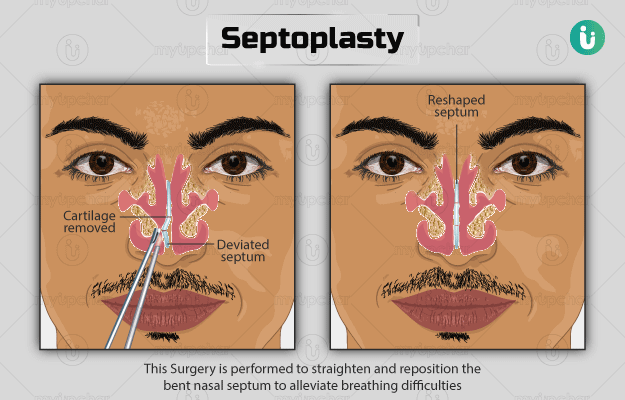Summary
Septoplasty is a surgical procedure to reconstruct a crooked or deviated nasal septum, the partition wall that separates the two nostrils. Deviated nasal septum is a common condition that occurs due to a birth defect or after a direct injury to the nose. The surgery is recommended when the deviated septum causes symptoms like difficulty breathing, headache, trouble sleeping, and sinusitis. Septoplasty is sometimes also performed along with other surgical procedures such as septorhinoplasty (procedure to fix other parts of the nose along with the nasal septum).
The surgey may be done under general or local anaesthesia. During the procedure. the surgeon will remove, straighten, and reposition your deviated nasal septum. The surgery may last for about an hour. The healing process may take around three to six months.










































